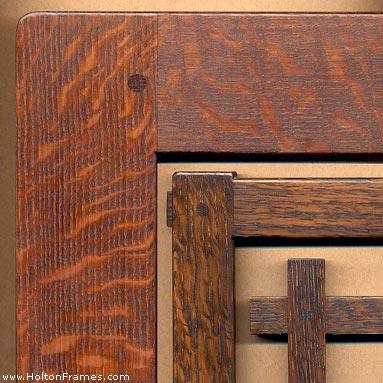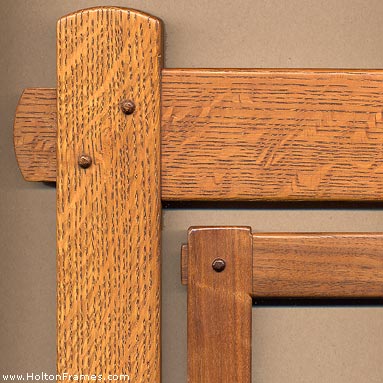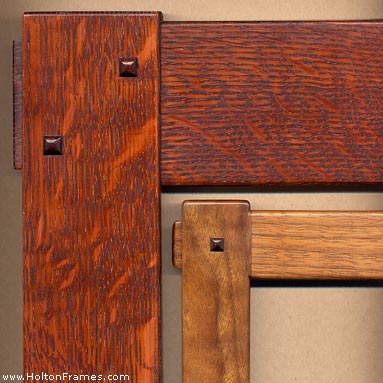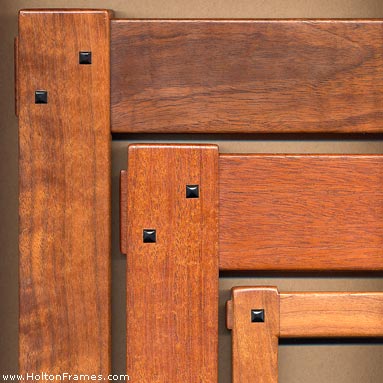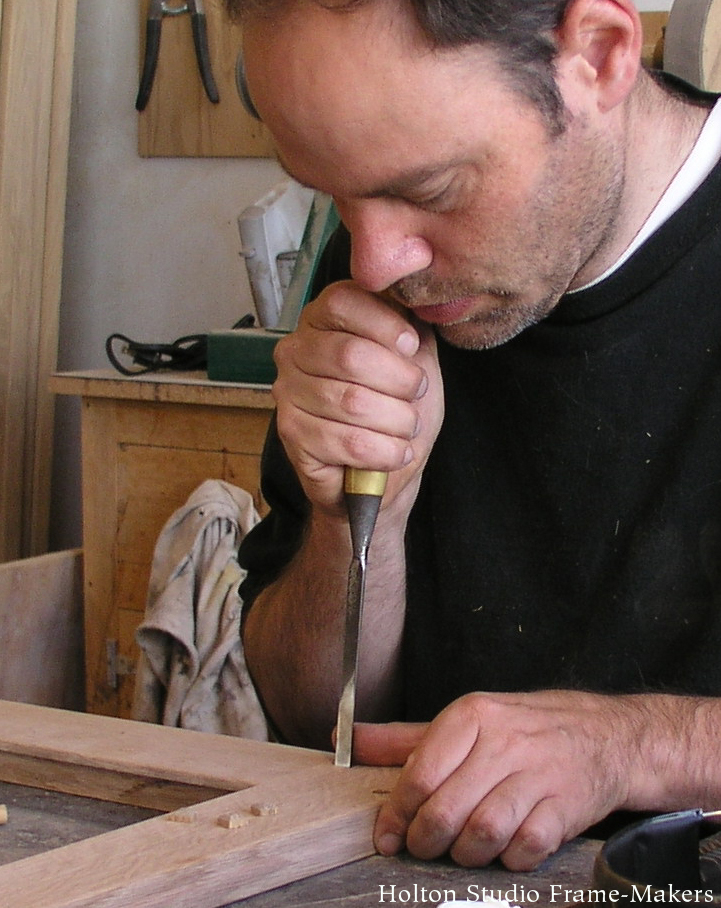…for Mortise & Tenon and Lap-Joined (Adirondack) Frames
In traditional woodworking, mortise-and-tenon and lap joints are frequently “pinned:” a dowel is driven through the joint to further secure an already very strong joint. The pinning of our lap-joined Adirondack and mortise-and-tenon (both blind- and through-tenon joints) frames offers the opportunity to accent the corners with your choice of three corner treatments –
- flush dowels
- proud dowels
- raised square plugs (inlaid over dowels)
Dowels are in the same wood as the frame. Square plugs are typically in your choice of ebony or the same wood as the frame.
Flush Dowels
Left: A single flush dowel is the most basic corner treatment (the dowel is driven through the joint and cut and sanded flush to the face of the frame). (Shown in, from left to right, No. 1000 R (Rounded Aurora) – 3”, Four-Square 1.25”-1.25” Basic, and Adirondack – 3/4” all in stained quartersawn white oak.)
Proud Dowels
Left: Proud dowels offer more definition than flush dowels as they are raised and rounded, and further articulate the corners of the frame. (Shown in Four-Square 2.0”-2.5” Rounded Ends in stained quartersawn white oak, and, to the inside, Four-Square 1.25”-1.25” Basic in walnut.)
Raised Square Plugs
Left: Raised square plugs, inlaid over the actual pins, are a more refined treatment. Shown here: plugs in same wood as frame. (See ebony square plugs below). Outer: stained quartersawn white oak Four-Square 3.0”-3.5” Basic. Inner: walnut Four-Square 1.5”-1.5” Basic.
Left: Especially in tighter-grained woods like walnut, mahogany, and cherry, ebony square plugs add contrast and an Asian aesthetic. A favorite design touch of the Arts & Crafts architects Greene and Greene. (Shown in, from left to right, Four-Square 2.0″-2.5″ Basic in walnut, Four-Square 1.0”-1.0” Basic in Honduran mahogany, and Four-Square 1.0”-1.0” Basic in cherry.)
